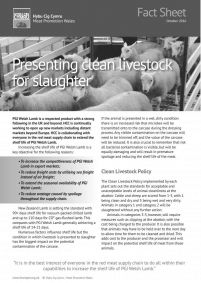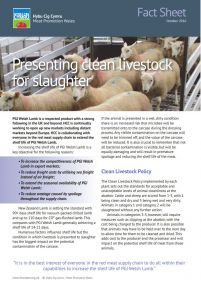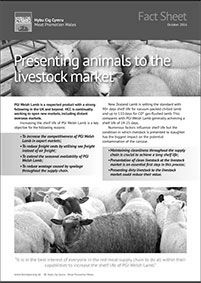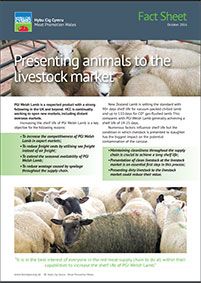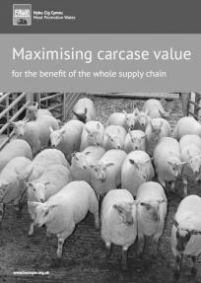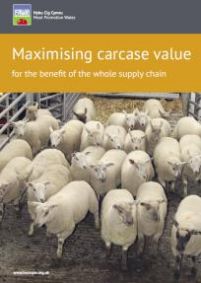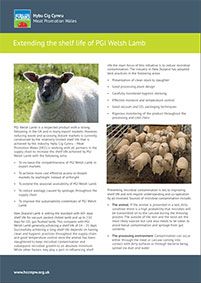- Home
- Resources
- Sheep Management
- Shelf life
Shelf life
Hybu Cig Cymru – Meat Promotion Wales (HCC) is working with all partners in the supply chain to increase the shelf life achieved by PGI Welsh Lamb with the following aims:
- To increase the competitiveness of PGI Welsh Lamb in export markets
- To achieve more cost effective access to distant markets by seafreight instead of airfreight
- To extend the seasonal availability of PGI Welsh Lamb
- To reduce wastage, caused by spoilage, throughout the supply chain
It is crucial that cleanliness is maintained throughout the supply chain in order to successfully achieve a long shelf life. Numerous factors will influence shelf life, but the condition in which livestock is presented to slaughter has the biggest impact on the potential contamination of the carcase.
Successfully achieving a long shelf life depends on having clean and hygienic practices throughout the supply chain and good temperature control once the animal has been slaughtered to keep microbial contamination and subsequent microbial growth to an absolute minimum.
Case Study: Rhug Estate Organic Farm – The importance of an extended shelf life.
Rhug Estate is an award winning organic farm producing organic PGI Welsh Lamb amongst a range of other products. The estate comprises of the main farm in Corwen, Denbighshire and Ty Mawr situated on the Gwynedd coast.
Quality and consistency of their product is vital, Rhug has a vast portfolio with clients from Michelin starred establishments such as ‘Belmond Le Manoir Aux Quat’Saisons’ and Marcus Wareing Restaurants in England, to buyers in export markets including Hong Kong, Dubai and Singapore. PGI Welsh Lamb from Rhug also has an impressive extended shelf life which is crucial for competing in these distant export markets.
“I noticed that cleanliness at slaughter was a big focus in New Zealand 15 years ago when I visited as part of my HCC Scholarship”, recalls Gareth Jones, Rhug Estate, Farm Manager. “In New Zealand farmers farm for the market, with the emphasis being on the end product.”
“Cleanliness of lambs is vitally important for achieving an extedned shelf life. Lambs must be as clean as possible when slaughtered in order to minimise the potential bacterial count”, he says. “There is a vast difference in the cleanliness of lambs that have been housed prior to transportation to the abattoir and those that are transported direct from field to abattoir.”
All of Rhug’s lambs are housed overnight before they are transported for slaughter. “They have access to water, but feed withdrawal is an important aspect for maintaining cleanliness”, states Gareth.
Lambs are clipped as close as possible to slaughter when required by the abattoir, otherwise clipping is done depending on the cleanliness of the lambs, the weather and the method that was used to finish the lambs. “We always use sawdust as bedding during transportation to ensure the lambs are as clean as possible when they arrive at the abattoir.”
Gareth Jones states “Until you start to sell the meat that you produce, you don’t realise the importance of shelf life. For retail it’s absolutely essential.”
To read more about this project click here.






